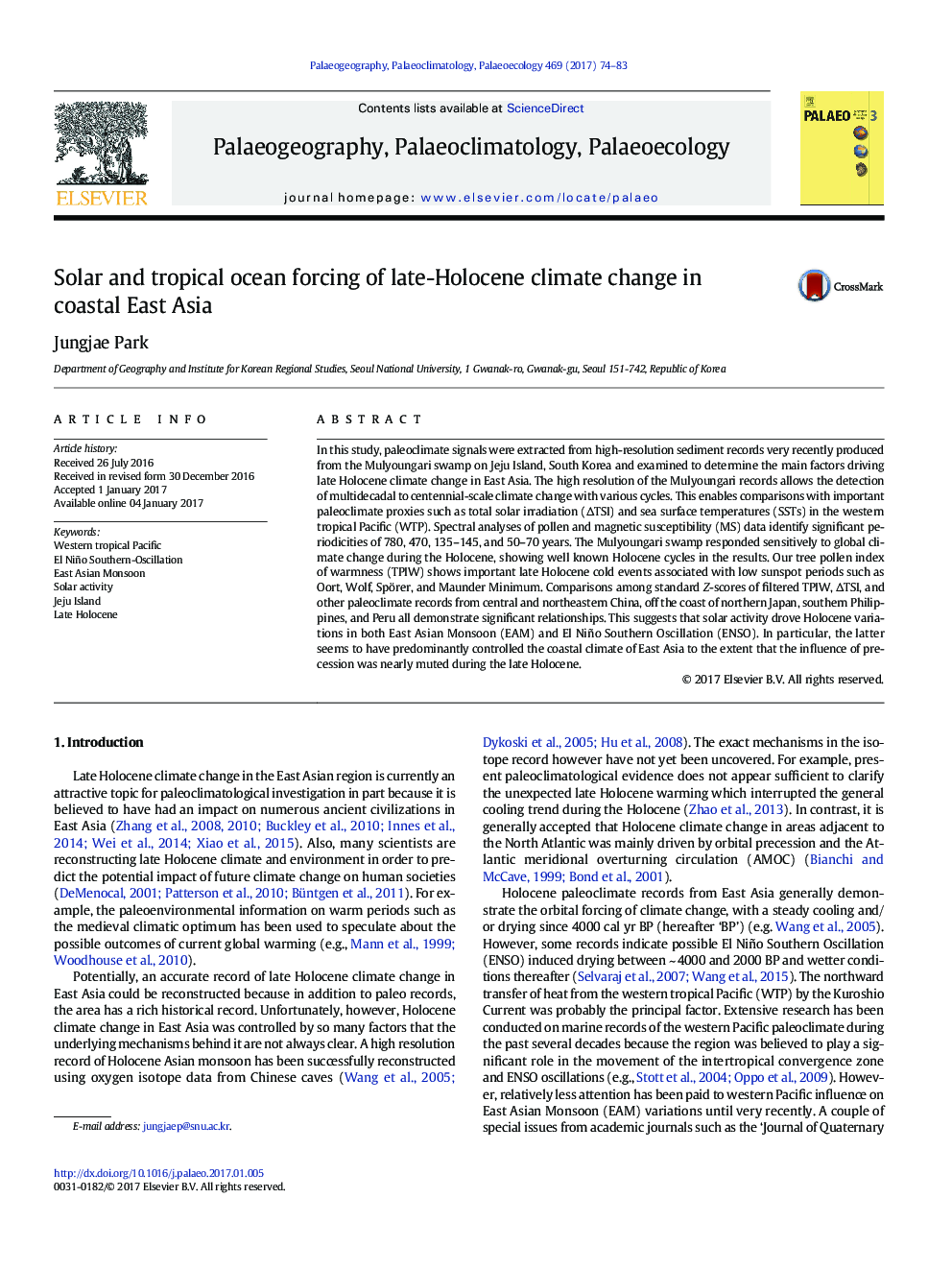| کد مقاله | کد نشریه | سال انتشار | مقاله انگلیسی | نسخه تمام متن |
|---|---|---|---|---|
| 5755721 | 1622123 | 2017 | 10 صفحه PDF | دانلود رایگان |
عنوان انگلیسی مقاله ISI
Solar and tropical ocean forcing of late-Holocene climate change in coastal East Asia
ترجمه فارسی عنوان
خورشید و گرمسیری اقیانوس را مجبور به تغییر آب و هوا در اواخر هولزن در شرق آسیا ساحلی
دانلود مقاله + سفارش ترجمه
دانلود مقاله ISI انگلیسی
رایگان برای ایرانیان
کلمات کلیدی
استوایی گرمسیری اقیانوس آرام، ال نیکو - نوسان جنوبی، آسیای شرقی آسیا، فعالیت خورشیدی، جزیره ججو، هالوتن بعدا،
موضوعات مرتبط
مهندسی و علوم پایه
علوم زمین و سیارات
فرآیندهای سطح زمین
چکیده انگلیسی
In this study, paleoclimate signals were extracted from high-resolution sediment records very recently produced from the Mulyoungari swamp on Jeju Island, South Korea and examined to determine the main factors driving late Holocene climate change in East Asia. The high resolution of the Mulyoungari records allows the detection of multidecadal to centennial-scale climate change with various cycles. This enables comparisons with important paleoclimate proxies such as total solar irradiation (ÎTSI) and sea surface temperatures (SSTs) in the western tropical Pacific (WTP). Spectral analyses of pollen and magnetic susceptibility (MS) data identify significant periodicities of 780, 470, 135-145, and 50-70Â years. The Mulyoungari swamp responded sensitively to global climate change during the Holocene, showing well known Holocene cycles in the results. Our tree pollen index of warmness (TPIW) shows important late Holocene cold events associated with low sunspot periods such as Oort, Wolf, Spörer, and Maunder Minimum. Comparisons among standard Z-scores of filtered TPIW, ÎTSI, and other paleoclimate records from central and northeastern China, off the coast of northern Japan, southern Philippines, and Peru all demonstrate significant relationships. This suggests that solar activity drove Holocene variations in both East Asian Monsoon (EAM) and El Niño Southern Oscillation (ENSO). In particular, the latter seems to have predominantly controlled the coastal climate of East Asia to the extent that the influence of precession was nearly muted during the late Holocene.
ناشر
Database: Elsevier - ScienceDirect (ساینس دایرکت)
Journal: Palaeogeography, Palaeoclimatology, Palaeoecology - Volume 469, 1 March 2017, Pages 74-83
Journal: Palaeogeography, Palaeoclimatology, Palaeoecology - Volume 469, 1 March 2017, Pages 74-83
نویسندگان
Jungjae Park,
